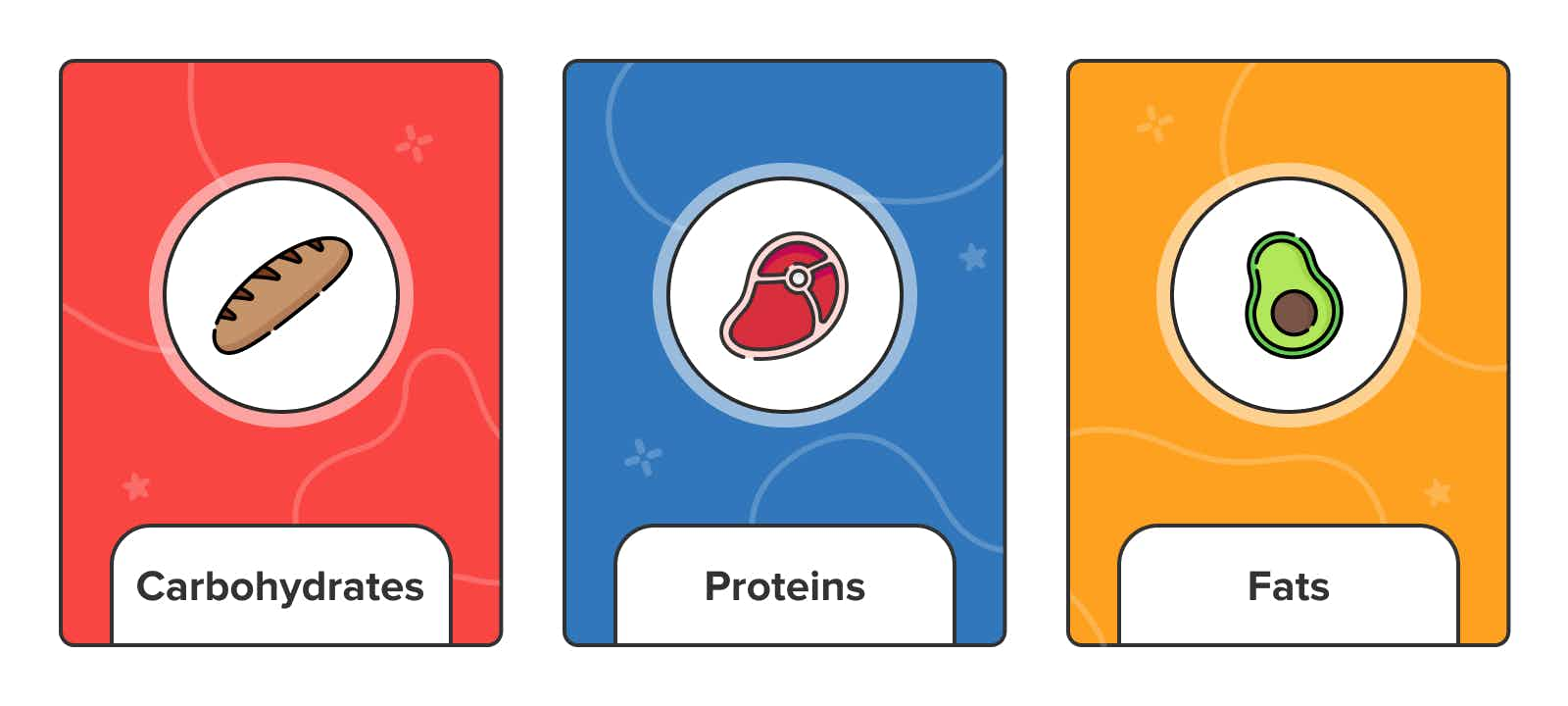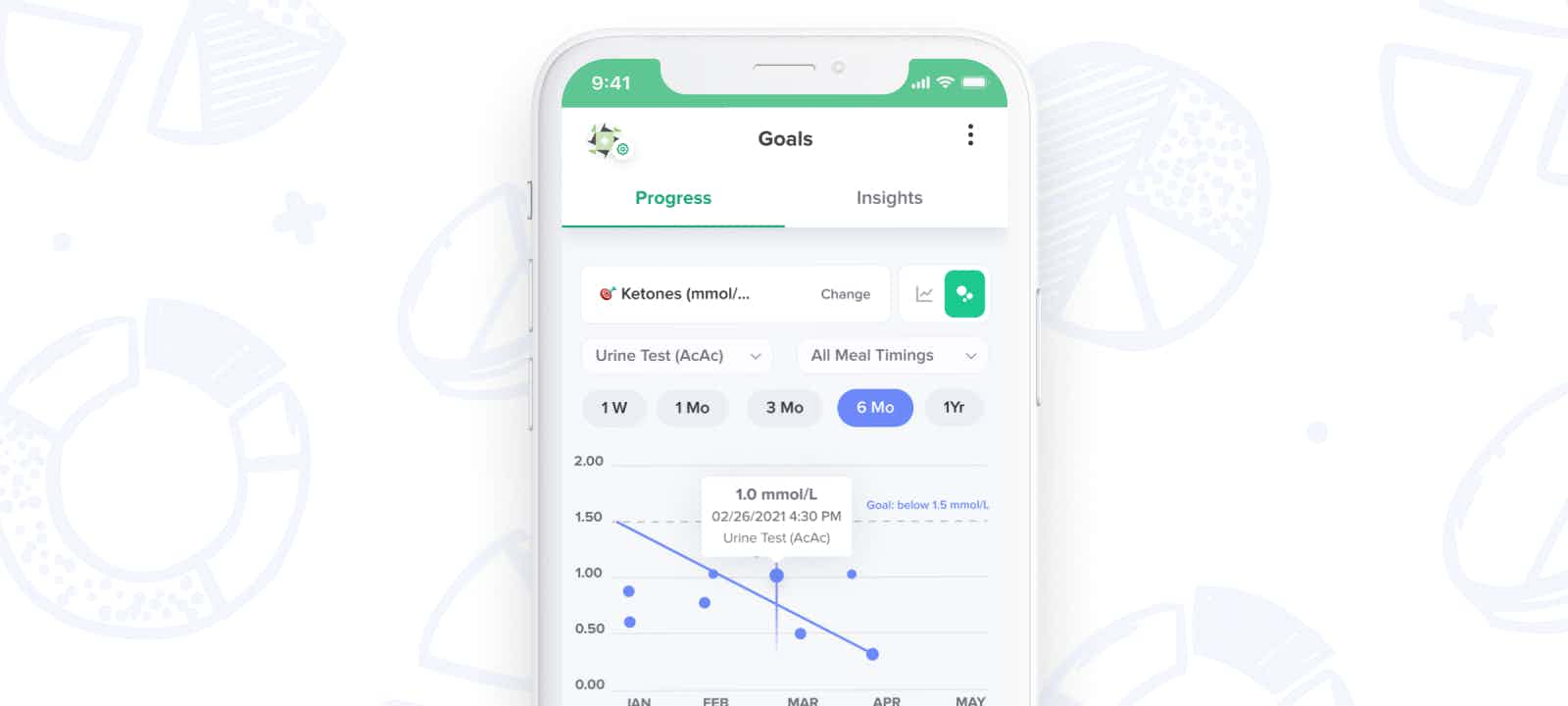What Does Macros Mean in Keto Diet
New to Keto? Trying it out, but still learning the ropes? If you haven't already, you'll want to familiarize yourself with the concept of tracking macros. Tracking macros—short for macronutrients—means tracking your carb, protein, and fat intake for each and every bite of food.
At first, tracking macros may seem like a pain. It's extra work to log your meals, even if you have a well-designed app that makes this as easy as possible.
Ugh. Another thing to do every day.
But it's worth it. Once you dial in your macros (especially your carbs), you'll get your low-carb diet humming on all cylinders.
The truth is, the benefits of Keto—fat loss, better energy, reduced cravings, and focus—are 100% dependent on hitting your macros! We've had users complain that they'd been on Keto for 9 months, and it just isn't working for them. But then - lo and behold - after they began strictly tracking macros for 30 days, they came back and reported life-changing results.
How's that for motivation?
Today you'll learn all about tracking macros. We'll cover what they are, why they matter, and practical tips you can implement right away. Enjoy!
Macronutrients are nutrients required in large, or "macro", amounts in your diet. Nutrients required in smaller amounts, like vitamins and minerals, are called micronutrients.
Macronutrients come in three main forms: carbohydrates, protein, and fat. These three macros provide the raw materials to produce energy, build muscle, heal wounds, and much more. Technically, alcohol is also a macronutrient, but it's not essential, and not something you need to track on a macro-based diet.
Another feature of macronutrients? They contain calories. (Calories approximate the amount of energy released when a food is digested.) Here are the calorie counts in each macronutrient:
- Carbohydrates: 4 calories per gram
- Protein: 4 calories per gram
- Fat: 9 calories per gram
- Alcohol: 7 calories per gram (in case you were wondering!)
Despite what you may have heard, calories matter on a macro-based diet. For instance, if you eat too many calories (even healthy fat calories) on a Ketogenic diet designed for weight loss, you probably won't lose weight. (Fortunately, most people find that overeating isn't a problem on Keto, likely due to reductions in hunger hormones like ghrelin.)[*]
So yes, calories matter. But the type of calorie matters too. In other words, a fat calorie doesn't affect your body in the same way as a carbohydrate calorie. And protein has its own special functions too.
With that in mind, let's run through these macros:
#1: Carbohydrates
Carbs are how plants store energy. (Think grains, fruits, and roots). So plants store carbs...then animals eat them.
When we digest carbs, they end up in our blood as blood sugar. This blood sugar can either be used immediately for energy, or stuffed away as glycogen (stored sugar) or fat. Your ability to process carbs depends on the hormone insulin, which we'll cover soon.[*]
#2: Protein
Protein is found in both plant and animal sources, and it's an absolute dietary necessity. Getting enough protein helps you maintain muscle, produce neurotransmitters, and synthesize a wide variety of hormones.[*]
If you don't get enough protein, your body breaks down your muscle mass to meet those needs. Yikes. That doesn't happen when you restrict carbs or fat.
#3: Fat
Fat gets a lot of flak, but assuming we're talking about healthy fats like olive oil, avocados, coconut oil, butter, and animal fat—this is mostly undeserved. Fat helps you produce and store energy, absorb fat soluble vitamins like A, D and K, and build cell membranes.[*]
On a Keto diet or during a fast, fat becomes your primary energy source. In other words, eating fat helps you access body fat.[*] Let's dig into why.

The #1 rule of low-carb dieting is to mind your macros. On the Keto diet, minding your macros means eating 60-70% of your calories from fat, 20-30% from protein, and 5-10% from carbs.[*]
This isn't just for funzies. Keeping your macros in these ratios signals your body to enter the fat-burning state known as ketosis.
Keeping carbs low is the crucial piece. That's because keeping carbs low keeps blood sugar low—which means that less insulin (your blood sugar boss) is released into circulation.[*]
With insulin absent, a neon sign lights up inside your liver cells: CARBS ARE SCARCE! TIME TO START BURNING FAT AND MAKING KETONES.
That's how ketosis happens. And when you stay in ketosis over a period of weeks, the benefits of fat loss, stable energy, appetite management, and mental clarity often follow.
You just learned why you need to cut carbs on Keto. Not all carbs, however, are on the chopping block.
Fiber and sugar alcohols, for instance, have very little blood sugar (or glycemic) impact.[*][*] Because of this, they won't meaningfully affect your Keto macros.
So instead of total carbs, consider tracking net carbs on Keto. When you track net carbs, you'll be much less restricted in what you can eat.
The equation for net carbs looks like:
Net carbs = Total carbs - fiber - sugar alcohols
Avocados, for example, have about 12 grams of total carbs, but 9 of those are from fiber. Only 3 net carbs, phew!
Any macro tracker worth its salt will have net carb functionality, although many include this feature with their premium membership only. Net carb tracking is free with Carb Manager, and you can learn how it works here.
No diet is one-size-fits-all. You're a unique individual, and you have unique needs. Let's use Keto as an example.
Let's say you're doing Keto for weight loss. In this case, you might want to cut carbs below 5%, lower than a person maintaining weight.
Alternatively, if you're extremely active (CrossFit, say), you might want to bump up the carbs and protein a bit. Protein in particular is essential for repair and recovery after exercise.
So, how do you calculate your macros? You use technology to calibrate your diet to your specific needs.
Carb Manager, for instance, features a macros calculator that allows you to customize macros based on diet (like Keto), activity levels, weight loss targets, and more. If you're on a Keto diet, the key to success is to hang near the recommended macros, then make adjustments based on your goals and lifestyle. The macros calculator makes this easy.
Keto isn't the only diet in which you track macros. IIFYM, or "if it fits your macros", is another approach that's catching on for weight loss.
The IIFYM diet is higher in protein and carbs than Keto, and bases your macro and calorie targets on your resting metabolic rate, activity levels, and weight goals. If you're interested, calculate your IIFYM macros here, then use a macro tracker like Carb Manager to meet them.
Now for the fun part: Actually tracking your Keto macros! (The highlight of your day, I know). Here's some actionable advice to get you started.
You'll want to use an app to track your macros (that's tip #3!), but still: Don't neglect the ancient power of pen and paper.
When you write something down, you're more likely to make it happen. In one study, people who pre-planned exercise were 2-3 times more likely to follow through than those who didn't.[*]
Practically speaking, this could mean:
- Using a journal to plan your meals and macros each morning
- Logging your meals in the app, and comparing your actual results to your plan
Give it a try.
Ketones are tiny molecules produced when your liver burns fat.[*] Once released into circulation, they fuel your brain and body with clean, efficient energy.
Ketones can be measured in both blood and urine. If Ketone levels are elevated, it's a good sign your low-carb macros strategy is working.
To test Ketone levels accurately and affordably at home, consider picking up a Keto-Mojo meter. As a bonus, Carb Manager will likely be rolling out an integration in the near future.

When you embark on your Keto journey, don't do it alone. Hire a digital health coach to guide your steps.
If that sounds expensive, don't worry: It's not. We're talking about an app here!
A macro tracker makes your Keto diet MUCH easier. You tell it what you ate, it queries a massive food database, and out pops your macro ratios. Then you adjust accordingly.
But a quality app should offer more than just macro tracking. The Carb Manager app, for instance, gives you meal plans, Keto advice, community support, a video tutorial course, and over thousands of low-carb recipes.
With all that support, why spend big bucks on a health coach? You have everything you need, right there in your pocket.
What Does Macros Mean in Keto Diet
Source: https://www.carbmanager.com/article/xtqzoxeaaceachd1/what-are-keto-macronutrients-macros/